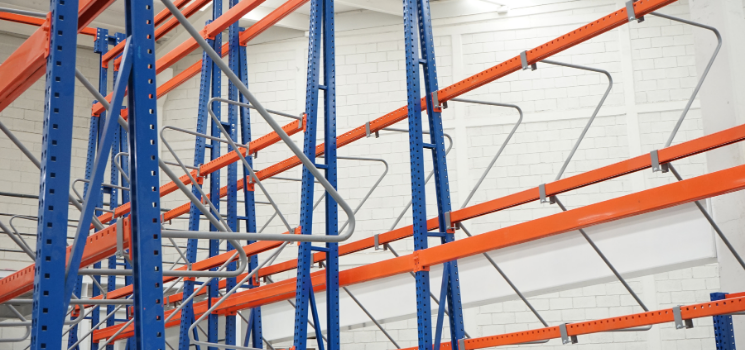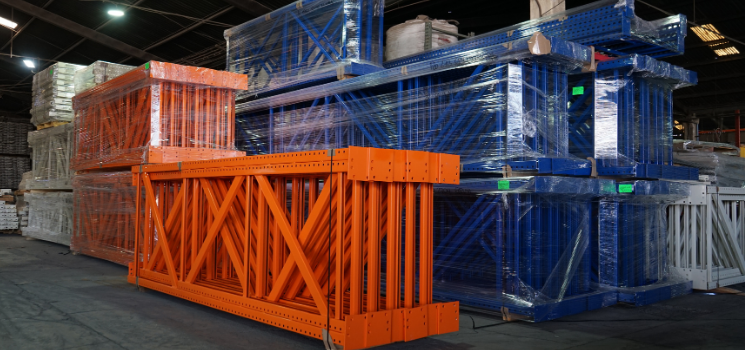What Is a Customized Racking System?
A customized racking system is a storage structure designed and engineered specifically for your facility’s dimensions, workflow patterns, product types, load-bearing requirements, and future growth plans. Rather than a one-size-fits-all rack, these systems are tailored: different beam heights, widths, depth, materials, protective features, and sometimes integrations with automation, conveyors, or specialized picking systems. These systems are common in industries such as electronics, automotive parts, cold storage, pharmaceuticals, and fashion/textiles—basically anywhere product mix, geometry, or regulatory constraints aren’t standard.
Key Advantages of Customized Racking
1. Improved Space Utilization
Standard racking often leaves dead zones—unused height, awkward spacing, or ceiling areas untouched. Customized racking helps you use every inch effectively, adapting to ceiling height, column layout, and facility shape. Facilities may see 15–30% more pallet positions compared to standard racks, depending on product mix.2. Better Workflow & Picking Efficiency
Tailoring your rack layout to your picking process—whether batch, zone, or wave picking—can reduce travel time for staff, reduce forklift congestion, and increase safety. For example, integrating mezzanine levels or placing high-turn SKUs closer to packing zones speeds throughput substantially.3. Handling Specialized Loads and Products
Heavy, oversized, oddly shaped, or temperature-sensitive products need special consideration: load capacity, shelf depth, protective coatings, environmental controls, and more. Customized solutions ensure racking withstands weight, moisture, cold, or chemicals where needed.4. Scalability & Future-Proofing
A good custom racking design isn’t just for today—it accounts for future growth. Maybe SKU variety will increase, maybe automation will be introduced later, or seasonal spikes will demand extra capacity. Building modularity, provisions for automation, and upgrade paths reduce the need for costly retrofits.5. Enhanced Safety & Compliance
Because custom racking is engineered for specific loads, facility geometry, and codes (local building, seismic, fire safety), it tends to exceed safety norms. Protective accessories like column guards, rack protectors, specific coatings, and higher standards of QA/QC ensure safer operations. The Material Handling Industry (MHI) provides resources and guidelines for best practices in rack safety and system design.Considerations and Trade-Offs
While the benefits are significant, there are trade-offs to acknowledge:- Upfront Cost: Customization costs more initially than standard racks.
- Longer Lead Time: Engineering, materials, and assembly may take longer.
- Design Complexity: Requires expert planning; mistakes in layout can have big downstream costs.
- Regulation Compliance: For facilities in seismic zones, cold chain, or local building regs, customized racks must meet strict codes.

Research published by the Occupational Safety and Health Administration (OSHA) emphasizes that racking systems designed specifically for load type and layout reduce workplace injuries and pallet damage by up to 40% when compared with generic racking setups in similar facilities. Moreover, the International Warehouse Logistics Association (IWLA) reports that tailored racking systems help 3PL providers manage diverse customer inventory more efficiently, improving pick accuracy and reducing dwell time.
Is a Customized Racking System Right for You?
Here are indicators that your facility could benefit:- You manage a wide variety of SKUs or unusual product geometries.
- Your current racks leave unusable space (height, corners, or aisle constraints).
- Safety or regulatory compliance is a concern (e.g., cold environments, seismic zones).
- You anticipate growth, seasonal surges, or plan to integrate automation.
- Current workflows have bottlenecks—too much forklift travel, inefficient picking routes.
Conclusion
Custom racking systems offer a powerful way to transform your facility—maximizing space, improving workflows, handling specialized needs, and preparing for future growth while maintaining safety and compliance. At RackUSA, we specialize in designing tailor-made racking solutions that align exactly with your operational challenges and objectives. Whether you need capacity, efficiency, or flexibility, we are ready to help you design a system that delivers measurable performance.
FAQs
1. How much more expensive is a custom rack compared to off-the-shelf? Depending on complexity (load capacity, special materials, coatings, design changes), custom might cost 20–50% more upfront, but the ROI from space savings, productivity, and reduced retrofits often offsets this within a few years.2. How long does it take to design and install a custom racking system? Time varies—simple adaptations might be delivered in several weeks; full custom layouts with structural engineering, coatings, or mezzanines could take 8–12+ weeks including permitting in some jurisdictions.
3. Can custom racks be integrated with automation later? Yes. A well-planned custom design often includes load paths, clearances, and structural support that anticipate automation. Retrofit is possible but smoother if this is considered from the beginning.
4. Are there specific industries where custom racking is essential? Yes—industries like cold storage, pharmaceuticals, automotive parts, and e-commerce with many SKUs often find custom racking indispensable for efficiency, safety, and compliance.
5. What role do local building codes and regulations play? A big one. Custom racking must comply with local structural, fire, seismic, and cold-storage laws. Using engineers familiar with local codes ensures compliance and avoids costly delays.
